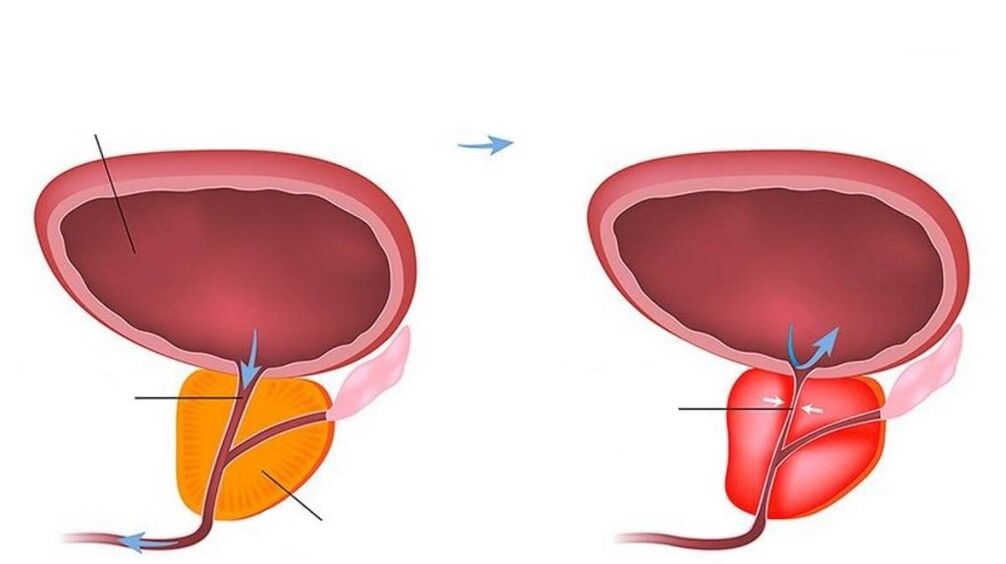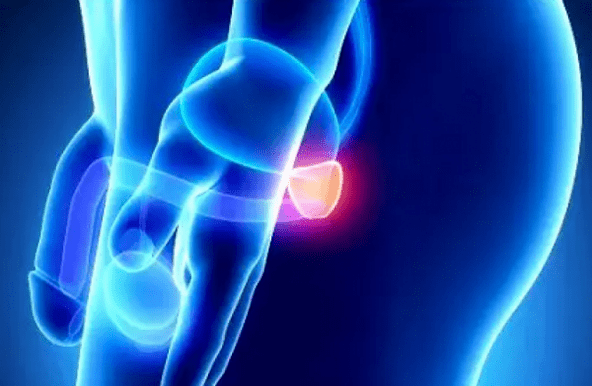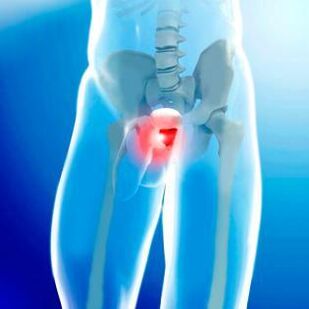Prostatitis is an inflammation of the prostate gland, also known as the prostate gland. This disease can occur for the following reasons:

- Infection.
- Bacteria.
- Virus.
- Mushroom.
- Long-term use of antibiotics, leading to impaired immunity.
In many cases, the infection enters the body through sexual contact. As a result, stagnation occurs in the pelvic organs and weakened blood circulation.
There are also non-infectious reasons why chronic prostatitis can develop:
- Sedentary lifestyle.
- Incorrect structure of the prostate gland.
- Perineal injury.
- Congenital diseases.
- Swollen prostate gland.
- Low testosterone levels.
- Hard manual labor.
- Hypothermia.
- Stress and nervous tension.
The emergence of this pathology can also be caused by the development or ineffective treatment of such diseases:
- Sinusitis.
- Stones in the kidneys.
- Chest pain.
- Urethritis.
In addition, prostatitis can occur due to sexual disruptions and frequent interruptions, contributing to the development of a stagnant process.
Some facts to note:
- To maintain a healthy prostate gland, you need to have sex at least twice a week.
- There is no need to delay urination (this not only contributes to the development of stagnation, but also negatively affects the potency).
- Regular use of tobacco, alcohol will harm the prostate, so should not be overused.
How can you tell if the prostate is inflamed?
Symptoms of prostatitis can vary significantly depending on the degree of disease development. There are 3 phases:
- A feeling of discomfort appears in the lower abdomen. Often times you want to empty your bladder (with a burning sensation).
- Problems start in the genital area (an erection gets worse, pain feels like ejaculation, premature ejaculation).
- In the final stage, the body temperature rises, pain when urinating, the patient shiver.
Important: if we are talking about chronic prostatitis, then in this case the development of the pathology, as a rule, is not accompanied by corresponding symptoms (or manifestations of the disease areweak expression). The danger of this type of exacerbation is that the exacerbation can start at any time.

Treatment of chronic prostatitis with folk remedies
There are many traditional methods used to treat prostatitis. Immediately, we stated that each of the methods we describe below should be used only after consulting a doctor first. Remember, not only can self-medication be ineffective, it can also make the problem worse.
Also, you need to understand that folk remedies do not allow you to completely cure chronic prostatitis. It is reasonable to use them for the prevention of illness or as an auxiliary means, along with medications and physiological procedures prescribed by a doctor.
garlic
Garlic is considered to be effective in preventing and treating chronic prostatitis. Recipe:
- Take some garlic cloves.
- Throw them in a container (for example, a thermos) and pour a quarter liter of boiling water.
- Drink before bed on an empty stomach.
There is also another recipe:
- Take three shrimp.
- Pour 200 ml of cold milk.
- Bring to a boil over low heat and cook for one minute.
- Insist half an hour.
- Consume 35 drops four times a day after meals.
Water color of onion peel
Recipe:
- Peel the onion and wash it.
- Pour into a saucepan and pour half a liter of hot water.
- Boil for 5 minutes and leave for 60 minutes.
- Consume one teaspoon three times a day.
Drink a combination of golden mustache balm and asparagus juice
To prepare a balm, you need:
- Mix 150 ml of gold mustache extract with 500 grams of flaxseed oil.
- Put in a sealed container.
- Shake for 5-7 minutes.
You need to drink this decoction for 10 days, 3 times a day, one teaspoon each time, then for another 5 days, use asparagus juice with the same number of times, 2-3 tablespoons each time. l. Repeat the cycle twice.
Warm the prostate using birch resin
You need to take 3 tablespoons. Pour tar with 3 liters of boiling water. Then sit on this mixture for 7-10 minutes. The technique is effective in the early stages of prostatitis. It cannot be used in the presence of hemorrhoids or sexually transmitted diseases.

Tincture of Aspen bark
We immediately said that bark collection should be done in early spring, when the leaves on the tree are not yet flowering. This is very important, because during this stage, the juice is the most saturated, which has a healing effect. Collect young pods not more than 5 mm thick.
Recipe:
- Crush 100 g of dry skin.
- Add vodka until it completely covers the bark.
- Insist for 14 days, then stress.
- Consume 15-20 ml orally three times a day for a month.
Teacup Ivan Ivanovich
Recipe:

- Grind ivan tea leaves and pour hot water at the rate of 1 tbsp. l. per cup.
- Insist for 40 minutes.
- Remove herbs from infusion and use one tablespoon daily.
Another recipe involves using not only leaves but also flowers. They need to be poured with a cup of boiling water. The infusion is prepared overnight. You need to drink 2 times a day for half a glass.
Aloe tincture with honey
Aloe vera and honey are products that are widely used in traditional medicine. To prepare a drug for prostatitis, you will need:
- 0. 5 kg of aloe vera leaves (plants must be 3 years or older).
- The same amount of honey.
- Half a liter of red wine (preferably dry).
You need to mix all these ingredients and insist for 5 days in a dark and dry place. To prevent prostatitis, it is recommended to take 1 tablespoon 2-3 times a day. l. During a month. Next, you need to rest for 7 days and repeat the course.
Shower gel and shower gel with soft drinks
Soda helps to cope with infections that occur during prostatitis. Both the shower gel and lotion have been prepared in the same recipe. It is necessary to dilute soda with boiling water at the rate of 1 tablespoon. l. per liter. Before starting the procedure, it is necessary to allow the solution to cool slightly.
Propolis
It is processed according to this recipe:
- Crushed propolis should be poured with pure alcohol in a ratio of 1 to 2.
- Put the medicine in a dark and not hot place.
- Infused for 14 days, shaking occasionally.
- Stretch at the end.
This remedy should be taken on an empty stomach three times a day, mixed with warm milk. Ratio: 15 drops of alcohol per 100 grams of milk.
Alcohol on the roots and leaves of ginseng
10 units of ginseng will need 1 unit of alcohol diluted with water at a ratio of 1 to 1. Press for several days. Consume once a day. This formula is not recommended if you suffer from insomnia or high blood pressure.
Infusion of alcohol on aralia roots
Aralia has many beneficial properties that, among others, have a positive effect on the condition of the prostate gland. But the problem is that this plant grows mainly in eastern countries (Mongolia, China, Korea). In our latitudes, it is difficult to derive aralia's origins.
If you have success, here is the recipe for making tincture:
- Pour 20 g of root with 70% alcohol in the amount of 100 ml (vodka also works).
- Insist for a few days.
- Drink 10 drops 3 times a day.
The drug is not only effective in treating prostatitis. It also offers opportunities to cope with sexual dysfunction. However, in the case of cardiovascular diseases, this infusion cannot be used.
It is wine immersion
Mix 100 g of cumin with 1 liter of port. The drug should be prepared within 3 weeks. Consume half a glass before a meal. Alcohol drugs reduce prostatitis.
Mixed walnuts and honey
Nuts have long been used to restore male strength. To prepare a drug for prostatitis, you must:
- Cut up 5 nuts.
- Add half a cup of honey.
- Stir well.
Consume at the beginning of the day for 1 tablespoon. l.
Chamomile tea and bath
To make chamomile tea, you need to pour 200 ml of boiled water with 1 tablespoon. l. The tree dries and insists for several hours. Consume three times a day on an empty stomach. Medications allow you to cope with infection and reduce inflammation.
A bath with chamomile infusion is prepared as follows:
- 5 tbsp. l. Pour the dried chamomile with hot water.
- We boil for a few minutes and cook for about 2 hours.
- Add to bath when showering.
Chestnut shell tea
Remove the shell from the chestnut fruit. Fill with hot water, boil for a few minutes and use inside. The drink does not taste very pleasant, you can add a little honey.
Bathroom with pine needles
You need to boil the conifers (ideally pine) and pour them into the bathroom. The water temperature should not exceed 38 ° C. Raw materials can be collected independently, or can be purchased in a pharmacy.
Pumpkin seeds
The last folk remedy for prostatitis on our list is pumpkin seeds. They should be consumed daily for 30 pieces. Both help prevent the development of the disease and reduce painful symptoms.
Prostatitis can not cure itself?
Don't even expect prostatitis to go away on its own. This is not possible even in the case of the first stage. If the appropriate measures are not taken, the disease will only progress and as a result develop into a chronic disease.
See a urologist right away if you experience symptoms. He will prescribe the necessary drugs. In addition, the treatment of prostatitis, as a rule, involves physical education and proper nutrition. In some cases, immunomodulators and antidepressants are prescribed.
Is prostatitis dangerous and how it manifest?
Determining the presence of inflammatory processes in the prostate gland is quite simple. Prostatitis does not pose a serious danger to human life. However, without professional medical care, the pathology can cause serious inconveniences, limiting life.
If the prostate becomes inflamed, this leads to discomfort in the perineum and lower back area. The disease is often accompanied by pain. It can be both painful and painful. In particular, pain is associated with men who have not had permanent sex.
If infected, mucus may appear or pus. If treatment is not started in time, this will eventually lead to a deterioration in sperm quality.
Can chronic prostatitis be completely cured?
Prostatitis treatment statistics indicate that recurrence occurs quite often. Many cases come back because the patient no longer has the stamina to fully recover from the disease.
Of course, the treatment of prostatitis requires a lot of patience and quite a large financial cost. So, for example, if there is an infection and the doctor prescribes an antibiotic, there is no such thing as stopping it in the middle, even if the disease has resolved and went away on its own. If you do not complete the course of drug treatment, then after a while the pathogens will resolve on their own and, moreover, are immune to the drugs you are taking.
Thus, although chronic prostatitis often recurs, the patient's condition is mainly dependent on himself. If you strictly follow your doctor's recommendations, the symptoms of infection will not go away on their own for a long time, and may even disappear forever.
Get tested for prostatitis
In all cases, if prostatitis is suspected, the following procedures are prescribed:
- Blood test - helps determine inflammation by examining white blood cell level and erythrocyte sedimentation rate (ESR).
- Urine analysis - done several times. Allows you to determine the increased levels of bacteria and white blood cells.
- Research on the secretion of the prostate gland - allows the early detection of prostatitis, prostate cancer and infertility.
- Urine culture - allows you to determine the sensitivity of the bacteria that cause prostatitis, from which to choose the right antibiotic.
In the case of chronic prostatitis, a 4-cup urine sample is taken. This test helps you understand the exact location of the infection. The analysis is performed as follows:
- Patient refills urine tube 1.
- After that, the second time continued to urinate.
- The doctor massages the prostate gland. The standout secret was considered the third test.
- The remainder of the urine released after the massage is the 4th sample.
Further laboratory tests are performed:
- If bacteria is found in the 3rd or 4th part, it means that prostatitis is caused by bacteria.
- If more than 10 leukocytes are also found in the same samples, it is prostatitis.
- If there are more than 10 leukocytes, but the microbiota is still normal, then this may indicate the presence of chlamydia and other infections.
In the latter case, a scraping of the urethra and mucous membranes is performed so that sexually transmitted microorganisms can be detected.
In some cases, with a digital rectal examination, people suspect adenoma and prostate cancer. This situation is a reason for diagnosis, in that a blood test is done to measure the level of PSA (prostate-specific agent).
Note: PSA sampling is done no earlier than 10 days after rectal exam.
Examination of what is done to diagnose prostatitis
For the treatment of prostatitis, it is possible to use antibiotics, antibacterial (nonsteroidal) drugs, as well as drugs that increase immunity and improve blood supply. However, the most effective drug treatment cannot be indicated without preliminary diagnosis, which helps to understand the form of the disease.
Traditionally, an ultrasound check (ultrasound) is done if acute prostatitis is suspected. With this method, your doctor can:
- Determine the volume and density of the prostate gland.
- Find out if the varicose veins of the prostate gland are enlarged.
- Look for signs of an abscess.
In some cases, endoscopy is indicated, but in acute prostatitis, this method is contraindicated.
If prostatitis is accompanied by a urinary disorder caused by nerves, the following procedures may be additionally prescribed:
- The introduction of catheter probe to determine and record records of urethral pressure.
- Myography, which allows you to evaluate the activity of the pelvic floor muscles.
- CT and MRI, if the precondition is prostate cancer or noninflammatory prostatitis.
As a part of conservative therapy, laser therapy, herbal medicine, acupuncture therapy, electrophoresis, mud baths and many other procedures may be indicated. If this doesn't work, surgery is needed.
Ultrasonic forms of examination for prostatitis
According to statistics, in about 80% of cases of chronic prostatitis, pathogenic particles cannot be detected through subclinical tests. However, palpation also does not in all cases allow us to have an accurate diagnosis, as not always obvious structural changes occur in the prostate gland.
Even when it comes to chronic infectious prostatitis, the bacteriological analysis sometimes has very little information. As a rule, diagnostic errors are caused by bacteria accumulating in the tissues, but they do not enter the secretions, which are obtained in the laboratory.
In this regard, ultrasound is almost always indicated with analysis. This procedure not only allows to identify changes in the prostate gland, but also dynamically monitor improvements that occur during treatment.
In modern diagnostics, two types of ultrasound are used:
- Rectal.
- Through the abdomen.
Each of these techniques has their own advantages and disadvantages.
Trans rectal method
In this case, an ultrasound is inserted into the patient's rectum. This method provides great visualization and allows you to gather the most complete information about the state of the prostate gland.
Contraindications:
- Hemorrhoids and anal fissures.
- Rehabilitation stage after surgery.
- Benign and malignant tumors.
Abdominal-piercing method
The prostate gland is examined through the anterior abdominal wall. This method allows you to determine the size and boundary of the gland, as well as the symmetry of its lobes. The downside of such an ultrasound is that not all hospitals use quality equipment that allows reliable information about the condition of the tissues to be obtained.
What are the possible untreated consequences of prostatitis?
If prostatitis is left untreated, then it can cause the following complications:
- Prostate abscess, immediate hospitalization and surgical intervention.
- Formation of cysts and stones in the prostate gland, causing severe pain and requiring long-term treatment.
- Inflammation of the seminal vesicles (cholecystitis), is only treated in a hospital.
- The prostate gland becomes hardened, causing urinary problems.
- Dry.
What is the purpose of prostate massage?
Prostate massage is a procedure performed in all cases of chronic prostatitis, except for chronic prostatitis. She is also appointed in such situations:
- In the absence of orgasm.
- In the case of impotence.
- For diagnostic purposes (allows you to detect inflammatory processes).
Many men have certain prejudices towards prostate massage, they subconsciously agree. In fact, this procedure allows you to stop the development of prostatitis, eliminate infected secretions, stop the development of stagnation, improve blood circulation and increase male strength. sex, increase the quality of sexual intercourse.
However, there are cases when it is not possible to perform prostate massage:
- The prostate is severely inflamed.
- Tumors (both benign and malignant).
- Genital system infection.
- Hemorrhoids and anal fissures.
- Acute form of prostatitis.
- Prostate tuberculosis.
- Violation of urination.
- Exacerbation of chronic prostatitis.
Does chronic prostatitis interfere with normal sex and conception?
Chronic prostatitis usually doesn't have a sex problem. But it also happened in a different way. An annoying prostatitis (not only physical, but also psychological) is pretty straightforward. Painful feelings can make it difficult for a man to be intimate with his partner. At the same time, psychological factors can lead to erection problems.
Separately, it should be said about the infectious form of chronic prostatitis. In this situation, there is a risk that bacteria or fungus can be passed on during sexual intercourse.
Advice: if you decide to become pregnant with a baby, be sure to get tested and make sure not to get infected. And if it is found, go through a course of treatment.
Why is it important to have a regular sex life while having prostatitis?
For the normal functioning of the body, it is important to ensure that all of its needs are met. The condition of the prostate gland significantly affects sexual performance, but also affects the ability to conceive. This is due to secretions produced in the prostate gland, the part of the spermatozoa, responsible for sperm vitality and function.
When prostatitis is inflamed, the metabolism in the cells of the gland is accelerated, followed by toxins are excreted, accumulating in excretion. As a result, at the moment of orgasm, these harmful substances leave the body along with sperm, contributing to the normalization of the prostate gland and accelerating recovery.
There is another important point: with prostatitis, inflammatory processes occur, as a result of which blood flow becomes worse. When sexually stimulated, the blood supply to the penis increases significantly, and by the time of ejaculation, the pelvic muscles contract. All of this has a positive effect on the condition of the gland and helps to cope with inflammatory prostate disease.
What is the likelihood of infertility in chronic prostatitis?
In the early stages, prostatitis is not an obstacle to conception. In some cases, there are erection problems due to physiological and psychological factors. But with the right treatment and understanding on the part of the partner, the problem can be solved.
It is a completely different problem if you ignore the presence of prostatitis for a long time. The development of the pathology can lead to a decrease in the quality of the sperm: the sperm will become inactive and unable to gain points for conception. Furthermore, this problem is not always detectable by the results of analysis.
If you have prostatitis and cannot have children, see your doctor. In addition to a therapeutic course aimed at eliminating inflammatory and infectious processes in the prostate gland, as a rule, the diet and vitamins are prescribed. Although they do not increase fertility, they strengthen the immune system, helping to prevent the formation of new infections.
What to do if you are unable to conceive for a long time?
Doctors say that under normal circumstances, conception should happen within a year after having regular and unprotected sex. If not, you need to see your doctor for a thorough examination.
A man should undergo the following procedures:
- Sperm imaging - allows you to determine the number of active sperm, as well as evaluate the chemical and physical composition of semen.
- Genital ultrasound - aims to study the structures responsible for sperm formation and secretion, as well as to identify problems with the blood supply.
A variety of procedures are offered for women:
- Evaluate your baseline temperature for the 3 menstrual cycles, followed by a schedule.
- Ultrasound of the genitals.
- Hysterosalpinography - an image of the uterus and fallopian tubes to evaluate their anatomical structure and their circulatory capacity.
- Hysterosonography is an ultrasound examination of the uterine cavity.
- Blood test to determine the hormonal parameters in the endocrine system.
In some cases, the problem of conception arises due to the couple's dissonance. To determine the presence of this problem, a postpartum examination is prescribed and genetic testing is performed.



























